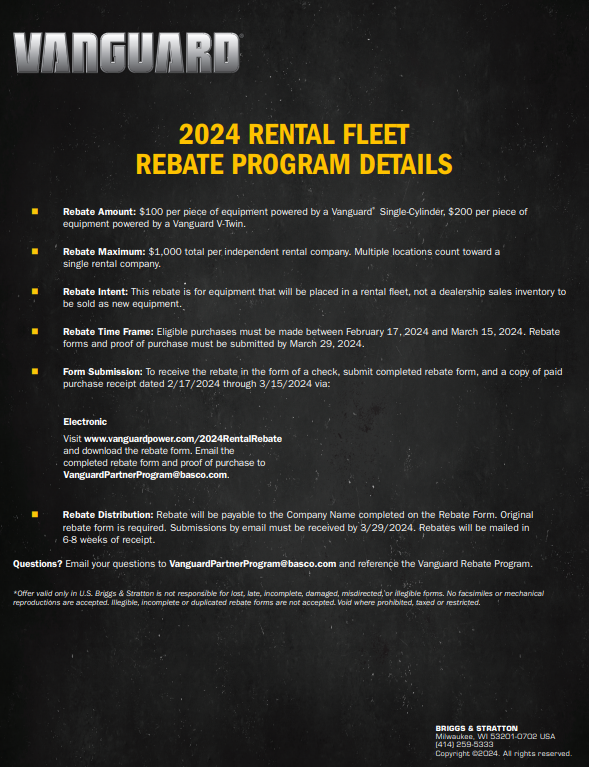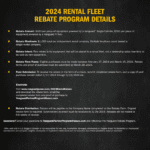Rental Rebate Form 2024 – In the world of renting, every dollar saved counts. The Rental Rebate Form 2024 is a vital document that ensures tenants receive their entitled rebates efficiently and accurately. Whether you’re a tenant or a landlord, understanding this form is crucial for a smooth rental experience.
Understanding Rental Rebates
Rental rebates refer to financial incentives offered by landlords to tenants. These rebates are usually provided in situations where a tenant has paid more rent than required or when certain conditions specified in the lease agreement are fulfilled.
The significance of rental rebates lies in their ability to uphold a positive landlord-tenant relationship. By offering financial relief to tenants, these rebates not only demonstrate goodwill but also promote prompt payment of rent. This fosters a sense of trust and satisfaction between landlords and tenants, contributing to a harmonious living or business arrangement.
Overall, rental rebates serve as a mechanism for landlords to show appreciation to their tenants while also ensuring that the rental process remains fair and equitable for both parties involved.
Components of Rental Rebate Form 2024
Additional Components:
- Lease Agreement Confirmation: A section where tenants confirm that they are in compliance with the terms of their lease agreement and eligible for the rebate.
- Rebate Justification: A space for tenants to briefly explain the reason for requesting the rebate, such as maintenance issues, property damage, or any other valid reasons.
- Documentation Attachments: A checklist or section where tenants can list and attach any supporting documents required to validate their rebate claim, such as repair receipts, inspection reports, or communication with the landlord.
- Landlord Approval: A portion for the landlord to indicate their approval or denial of the rebate request, along with any comments or additional information.
- Rebate Calculation: If applicable, a breakdown of how the rebate amount was calculated, including any deductions or adjustments.
- Submission Date: A space to record the date when the form was submitted by the tenant.
- Acknowledgment of Receipt: A statement confirming that the landlord has received the rebate request form, signed and dated.
- Terms and Conditions: A section outlining the terms and conditions of the rebate process, including any deadlines, restrictions, or consequences for false information.
- Contact Information: Contact details for both the tenant and the landlord, including phone numbers and email addresses, for communication purposes related to the rebate request.
- Dispute Resolution: Information on the steps to take in case of disputes regarding the rebate, including escalation procedures or mediation options.
- Deadline for Response: A specified timeframe within which the landlord must respond to the rebate request, either approving or denying it.
- Notarization: Depending on jurisdictional requirements, a space for the form to be notarized to ensure its authenticity and legality.
These components collectively ensure that the rental rebate process is transparent, documented, and legally enforceable for both tenants and landlords.
How to Fill Out a Rental Rebate Form
Step-by-Step Guide
- Gather all necessary documents, including the lease agreement and rental payment receipts.
- Complete the tenant information section accurately.
- Provide detailed property information to avoid any confusion.
- Clearly state the rebate amount being claimed and attach relevant documentation.
- Ensure both parties sign the form to acknowledge agreement.
Common Mistakes to Avoid
- Providing inaccurate information.
- Failing to submit supporting documents.
- Neglecting to obtain signatures from both parties.
Benefits of Using Rental Rebate Form 2024
Rental Rebate Form 2024 vs. Previous Versions
The Rental Rebate Form 2024 introduces several key improvements and updates compared to previous versions, designed to optimize the rebate process and improve user satisfaction:
- Simplified Format: The 2024 version features a more streamlined layout, making it easier for tenants and landlords to navigate and complete the form efficiently. By reducing unnecessary complexity, the form enhances user experience and minimizes confusion during the rebate process.
- Enhanced Clarity: The language and terminology used in the 2024 form have been refined to improve clarity and comprehension. Clear and concise instructions are provided for each section, ensuring that both parties understand their roles and responsibilities in the rebate agreement.
- Updated Information Fields: The form includes updated fields for capturing tenant and property information, reflecting any changes in contact details, lease agreements, or property specifications. This ensures that the rebate process is based on accurate and up-to-date information, reducing the risk of errors or discrepancies.
- Incorporation of Legal Requirements: The 2024 version of the Rental Rebate Form incorporates any new legal requirements or regulations related to rental rebates, ensuring compliance with relevant laws and industry standards. By staying current with legal obligations, the form provides greater protection for both tenants and landlords.
- Improved Documentation Requirements: Based on feedback from stakeholders, the form includes revised documentation requirements for supporting rebate claims. Clear guidelines are provided for the types of documents that should be submitted, reducing ambiguity and expediting the processing of rebate requests.
- Efficiency Enhancements: The 2024 form introduces efficiency enhancements, such as digital submission options or standardized templates for supporting documents. These features streamline the rebate process, saving time and effort for both tenants and landlords.
- Accessibility Considerations: The form may include accessibility features to ensure that it is usable by individuals with disabilities, such as screen reader compatibility or alternative formats. By prioritizing accessibility, the form promotes inclusivity and equal access to the rebate process for all users.
Overall, the Rental Rebate Form 2024 represents a significant improvement over previous versions, incorporating feedback from stakeholders and leveraging advancements in usability, clarity, and compliance to optimize the rebate process for all parties involved.
Importance of Compliance
Compliance with legal requirements and ensuring accuracy in completing the Rental Rebate Form 2024 are crucial for several reasons:
- Legal Compliance: Adhering to local rental laws and regulations is essential for both tenants and landlords to ensure the legality and enforceability of the rebate agreement. Failure to comply with applicable laws could result in legal consequences, such as fines, penalties, or invalidated rebate agreements.
- Protection of Rights: Compliance with legal requirements helps protect the rights of both parties involved in the rebate process. By following established regulations, tenants and landlords can ensure that their interests are safeguarded and that they are treated fairly under the law.
- Avoidance of Legal Disputes: Non-compliance with legal requirements increases the risk of legal disputes or challenges to the rebate agreement. By adhering to applicable laws and regulations, tenants and landlords can minimize the likelihood of disputes arising and avoid potential litigation or arbitration proceedings.
- Enhanced Transparency: Compliance with legal requirements promotes transparency and accountability in the rebate process. Both parties can trust that the terms of the agreement are fair, lawful, and clearly defined, reducing the possibility of misunderstandings or conflicts.
- Risk Mitigation: Ensuring accuracy in completing the Rental Rebate Form 2024 reduces the risk of errors, discrepancies, or omissions that could lead to complications in the future. By providing accurate information and documentation, tenants and landlords can mitigate potential risks and ensure the smooth processing of rebate requests.
- Maintaining Credibility: Compliance and accuracy demonstrate professionalism and integrity on the part of both tenants and landlords. By upholding these standards, they enhance their credibility and reputation, fostering trust and positive relationships between all parties involved in the rental agreement.
Compliance with legal requirements and accuracy in completing the Rental Rebate Form 2024 are essential for upholding the rights of tenants and landlords, promoting transparency, minimizing disputes, mitigating risks, and maintaining credibility in the rental rebate process.
Tips for Maximizing Rental Rebates
To maximize rental rebates effectively, consider the following tips:
- Keep Detailed Records: Maintain thorough records of all rental payments, lease agreements, and any correspondence related to rebates. These records serve as crucial evidence to support your rebate claim and can help resolve any disputes that may arise.
- Submit Promptly: Ensure timely submission of the Rental Rebate Form to expedite the processing and approval of your rebate request. Submitting promptly demonstrates your commitment and may increase the likelihood of a swift response from the landlord.
- Understand Eligibility Criteria: Familiarize yourself with the eligibility criteria specified in your lease agreement to ensure you meet all requirements for receiving a rebate. Pay attention to any specific conditions or deadlines outlined in the agreement to avoid potential complications.
- Communicate Clearly: Maintain open and clear communication with your landlord regarding your rebate request. Clearly articulate your reasons for seeking a rebate and provide any necessary documentation to support your claim. Effective communication can help facilitate the rebate process and address any concerns or questions from the landlord.
- Seek Clarification: If you have any questions or uncertainties about the rebate process or eligibility criteria, don’t hesitate to seek clarification from your landlord or property management. Understanding the requirements upfront can help you avoid misunderstandings and ensure a smoother rebate experience.
- Negotiate Terms: Depending on your circumstances, consider negotiating the terms of the rebate with your landlord. If you believe you are entitled to a larger rebate amount or have valid reasons for requesting additional compensation, politely present your case and negotiate terms that are mutually beneficial.
- Document Maintenance Issues: If your rebate request is related to maintenance issues or property defects, thoroughly document the problems with photographs, written descriptions, and repair invoices. Providing comprehensive documentation strengthens your case and increases the likelihood of approval.
- Follow Up: After submitting your rebate request, follow up with your landlord to ensure that it is being processed and to inquire about the timeline for approval or any additional requirements. Following up demonstrates your diligence and commitment to resolving the matter promptly.
By implementing these tips, you can effectively maximize your chances of successfully obtaining a rental rebate and ensure a smooth and efficient rebate process.
Conclusion
In conclusion, the Rental Rebate Form 2024 serves as a valuable tool for tenants and landlords, offering a structured framework for transparent and efficient rebate transactions. By comprehensively understanding its components and diligently adhering to the guidelines outlined within it, both parties can contribute to a smoother rental experience.
This form not only promotes clarity and accuracy in documenting rebate agreements but also enhances legal protection and compliance with relevant regulations. Tenants benefit from a standardized process that helps them assert their rights and claim rebates confidently, while landlords can efficiently manage rebate requests and maintain positive tenant relationships.
Download Rental Rebate Form 2024
FAQs
- What is a rental rebate form?
- A rental rebate form is a document used by tenants to claim financial incentives from landlords, typically due to overpayment of rent or meeting specific lease agreement conditions.
- How often can I apply for a rental rebate?
- The frequency of rental rebate applications may vary depending on the terms outlined in your lease agreement. Check your agreement or consult with your landlord for specific guidelines.
- Are there any eligibility criteria for rental rebates?
- Yes, eligibility criteria for rental rebates may vary depending on the terms of your lease agreement. Common criteria include timely payment of rent and compliance with lease terms.
- Can landlords refuse to provide a rebate?
- Landlords are typically obligated to provide rebates as outlined in the lease agreement or local rental laws. However, certain conditions must be met for a rebate to be valid.
- What should I do if there is a discrepancy in the rebate amount?
- If you encounter a discrepancy in the rebate amount, communicate with your landlord to clarify the issue and provide any necessary documentation to support your claim.

